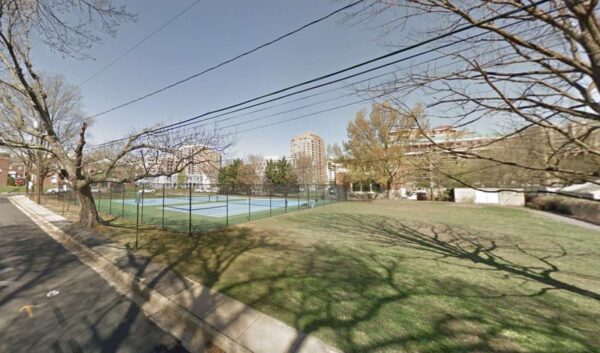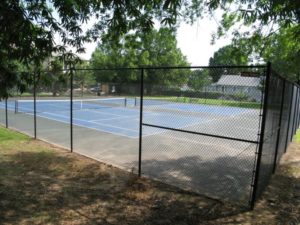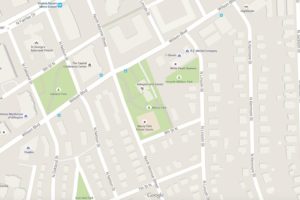
(Updated at 11 a.m.) The namesake of Maury Park in Virginia Square is Matthew Fontaine Maury, a pioneer of oceanography and a Confederate commander during the Civil War.
The park’s name could change, however, if renaming is included in a planning and renovation process slated to begin at the end of 2023.
“It is likely that the renaming of Maury Park may be considered during its upcoming master planning process, similar to other park renaming efforts,” Jerry Solomon, a spokeswoman for the Arlington Dept. of Parks and Recreation, tells ARLnow.
References to Maury have been removed over the last few years, prompted by the racial reckoning catalyzed by the murder of George Floyd by police officers. Last week, the U.S. Navy announced it will rename the oceanographic survey ship USNS Maury.
In July 2020, a statue of Maury in Richmond was removed after the mayor ordered the removal of all Confederate statues on city property.
Maury Park (3550 Wilson Blvd), a small green space behind the Museum of Contemporary Art Arlington, formerly the Arlington Arts Center, may be next. The old school building that has housed the arts center since 1977 was renamed in 1944 to honor Maury.
Arlington does not currently have a process for surveying all county structures for potential renamings, but DPR considers name changes as parks and facilities come up in the renovation cycle, Solomon said.
Through the renovation process, the county renamed Henry Clay Park to Zitkala-Ša Park — at the suggestion of the Lyon Park Citizens Association — “in order to honor the prominent author and activist from the indigenous community as opposed to a known owner of slaves,” Solomon said.
Maury Park is one of three urban parks in the Virginia Square Planning Area and in the Ashton Heights Civic Association, including Herselle Milliken Park and Gum Ball Park, set for upgrades in the near future.
“The project will master plan all three parks simultaneously to identify community needs and priorities while taking into consideration that the parks are located in close proximity and should have complementary rather than duplicative features,” per the Capital Improvement Plan.
Citing the county’s renaming policy, Solomon said, “renaming will be considered if a valid justification for the renaming is provided, the name change will not cause undue confusion with the community, and an appropriate level of community support exists.”
There are no plans to officially rename the building, according to Cynthia Liccese-Torres, the coordinator for Arlington County’s historic preservation program. The school is known interchangeably as the Clarendon School and the Maury School, though it has long been identified by the Arlington Arts Center, now the Museum of Contemporary Art Arlington.
Signage referring to Maury was replaced with signage for the Arlington Arts Center before 2008 during building renovations, she said.
Born in 1806 in Fredericksburg, Maury joined the U.S. Navy in 1821 and was promoted to lieutenant in 1836, according to a county webpage for the Arlington Arts Center building, which it calls the Clarendon (Maury) School. He served as superintendent of the Navy Department’s Depot of Charts and Instruments from 1842 to 1855 and from 1858 to 1861.
In the 1850s, he worked on a project to “resettle slaves from the U.S. to the Brazilian Amazon as a way to gradually phase-out slavery in the U.S.,” an effort that “ultimately went nowhere,” according to a blog post by the Library of Congress.
“Maury was neither a slave-owner nor a proponent of slavery,” the post said. “Nevertheless, in declining to fight against his native Virginia, Maury resigned his post and joined the Confederate Navy, initially to direct coastal and river defenses and develop naval mine technologies to use against the Union.”
He ended up spending most of the war abroad, “hoping to persuade Europeans to support the Confederate cause and bring the war to a quick end,” the Library of Congress post said.
According to Arlington County, Maury served as commander in the Confederate Navy and later as its secretary.
Following the end of the war, Maury remained abroad for several years before taking a professorship in meteorology at the Virginia Military Institute, in Lexington, where he would teach until his death in 1873.




